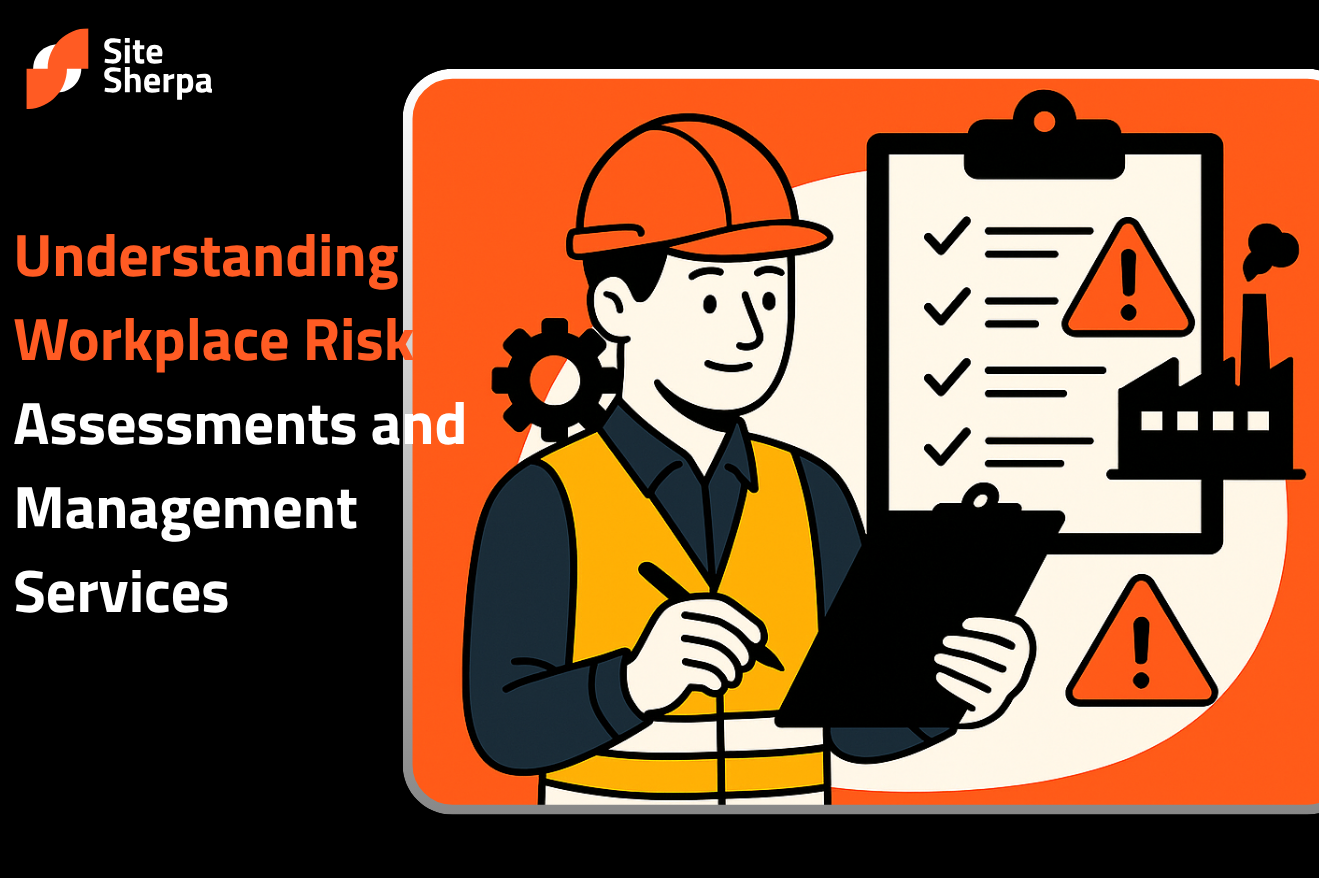Understanding Workplace Risk Assessments and Management Services
How to Assess and Manage Workplace Risks and Conducting Risk Assessments
Managing workplace risks is essential for safeguarding employee health, ensuring compliance, and maintaining smooth operations. SiteSherpa’s Risk Assessment and Management services help businesses proactively identify, assess, and control potential hazards in the workplace. SiteSherpa empowers organizations to reduce risks, stay compliant, and protect employees through expert guidance, data-driven insights, and customized mitigation strategies. Below, we explore the steps involved in effective workplace risk management and demonstrate how SiteSherpa simplifies this complex process.
Key Steps in Risk Management
Risk management involves systematically identifying, assessing, and controlling hazards to ensure a safe and compliant work environment. Here’s a step-by-step approach to risk management that SiteSherpa helps streamline:
1. Identify Hazards
The first step in effective risk management is identifying potential hazards within the workplace. Hazards can be physical, chemical, ergonomic, or psychosocial. Common workplace hazards include:
- Physical Dangers: Faulty equipment, unsafe machinery, or slippery floors
- Chemical Hazards: Exposure to toxic substances or improper material handling
- Ergonomic Risks: Poor workstation setups leading to injuries like repetitive strain
- Psychosocial Hazards: Work-related stress, long shifts, and high-pressure environments
SiteSherpa uses advanced tools to assist in hazard identification, allowing businesses to conduct thorough assessments and ensuring no critical risks are overlooked.
2. Assess the Risks
Once hazards are identified, the next step is assessing the associated risks. Key questions may include:
- Who could be harmed, and how?
- What current control measures are in place?
- What is the likelihood of harm occurring, and what are the consequences?
By evaluating risk severity and likelihood, businesses can prioritize which risks to address immediately and allocate resources effectively. We provide data-driven risk evaluations and offers businesses clear breakdowns of risk severity. Customizable reports allow decision-makers to prioritize urgent issues based on risk levels.
3. Control the Risks
Eliminating a hazard is the best method of risk control. If this isn’t possible, businesses must reduce risks as far as reasonably practicable. Control measures may include:
- Redesigning workflows to minimize exposure
- Substituting hazardous materials with safer alternatives
- Enhancing safety protocols and providing proper training
- Providing personal protective equipment (PPE)
We've developed tailored risk mitigation plans for each business, ensuring control measures are effective and in line with industry-specific needs. Automated tools allow companies to track the success of implemented controls over time.
4. Record Your Findings
Documenting risk assessments is crucial for compliance and accountability. Here are some essential factors to document:
- Identified hazards
- Individuals potentially affected
- Control measures in place
We automate the generation of detailed risk assessment reports, making storing and retrieving safety documentation easier and ensuring compliance with Work Health and Safety (WHS) regulations.
5. Review and Update Controls
Risk management is an ongoing process, and controls should be regularly reviewed to ensure they remain effective. This review process is essential when:
- New staff, equipment, or processes are introduced
- New risks arise, or existing ones escalate
- Employees report safety concerns or incidents
How Do You Conduct a Workplace Risk Assessment?
A risk assessment is a structured process to identify, evaluate, and control workplace risks. The first step is identifying hazards, which can be physical, chemical, ergonomic, or psychosocial. Next, risks are assessed by evaluating the likelihood and severity of potential harm, helping businesses prioritize actions. Once assessed, control measures are implemented to eliminate or minimize risks, guided by the control hierarchy. Finally, it is important to regularly review the effectiveness of these measures, especially when workplace changes occur, to ensure ongoing risk management.
What SiteSherpa Offers in Risk Management Services
Our services simplify this process by providing comprehensive tools and expert guidance for identifying, assessing, and managing workplace risks. Here’s how we can assist:
- Expert Risk Assessment Tools: SiteSherpa provides tools that streamline hazard identification and ensure thorough, accurate assessments.
- Data-Driven Insights: Businesses can make data-informed decisions on risk prioritization and control measures with real-time risk evaluations and reports.
- Customized Risk Mitigation Plans: SiteSherpa offers tailored strategies that align with specific workplace hazards, ensuring that control measures are both effective and practical.
- Compliance Assistance: We generate automated compliance reports to ensure your organization meets all regulatory requirements, including Work Health and Safety (WHS) regulations.
SiteSherpa provides a comprehensive risk management platform that simplifies hazard identification, risk assessments, and control implementation. Our tailored strategies, automated reports, and real-time monitoring ensure that your workplace remains compliant and safe.
Regular reviews are essential, particularly after significant changes such as new staff, equipment, or reported safety concerns. A review should occur whenever new risks emerge, or existing risks escalate.
Absolutely. Employees are invaluable in identifying potential hazards and suggesting practical, effective safety measures. Their input is essential for ensuring the relevance and effectiveness of your risk management strategies.
Related Content
Join Our Newsletter
Receive expert insights, safety updates, and the latest updates in our services and apps. Stay ahead of workplace safety, compliance, and operational efficiency delivered straight to your inbox.


.png)
.png)
.png)
.png)
.png)
.png)
.png)
.png)
.png)